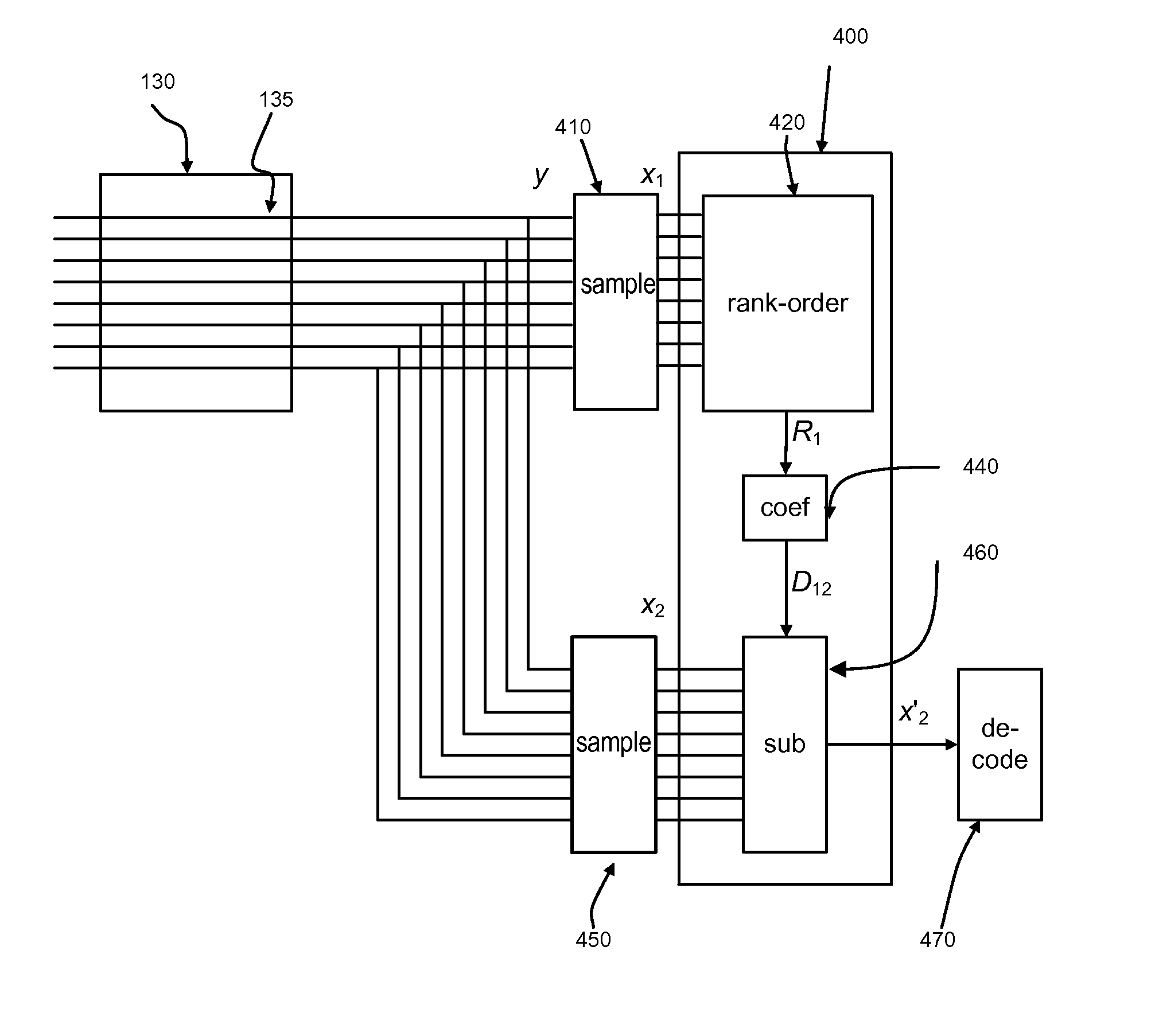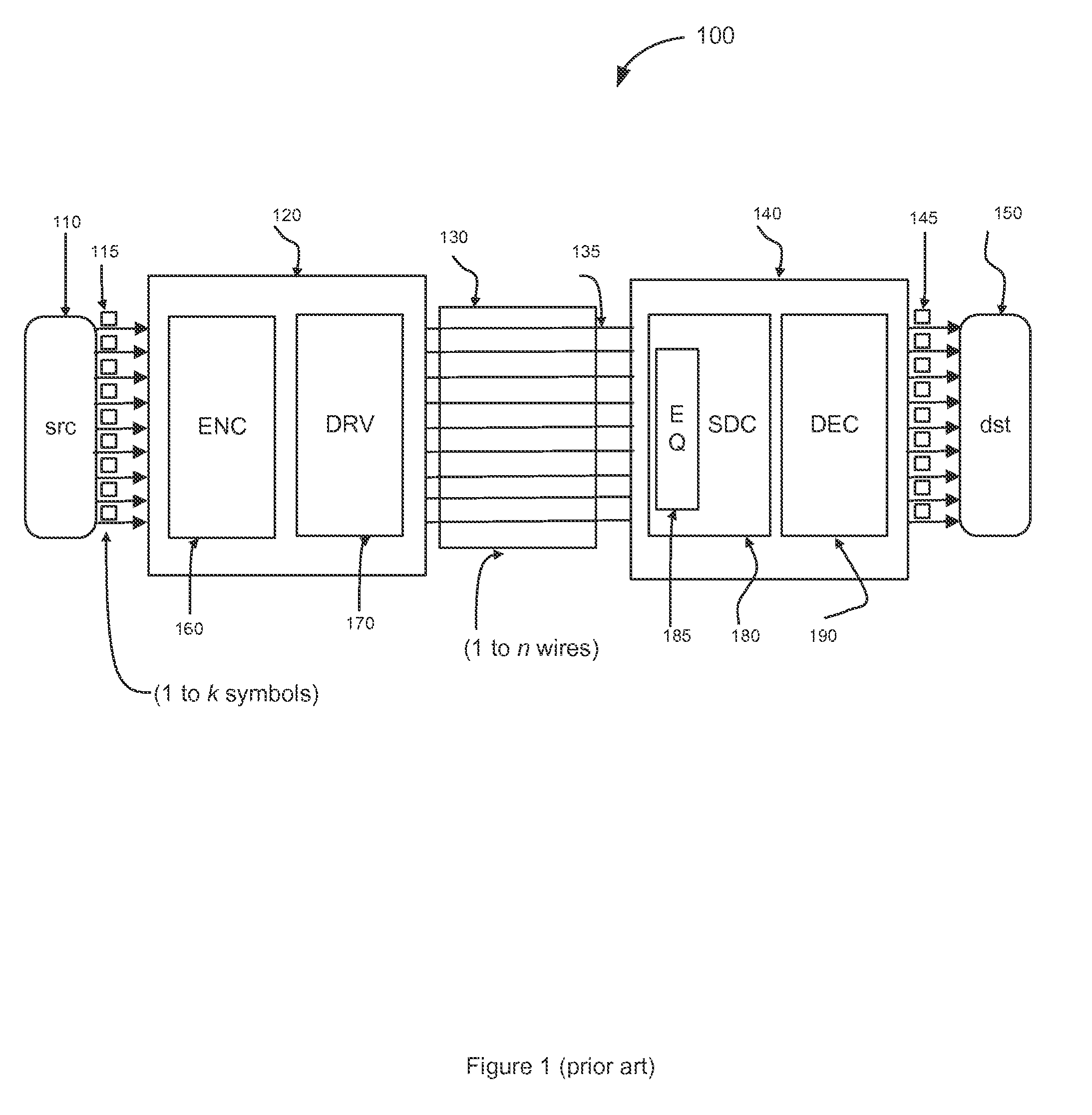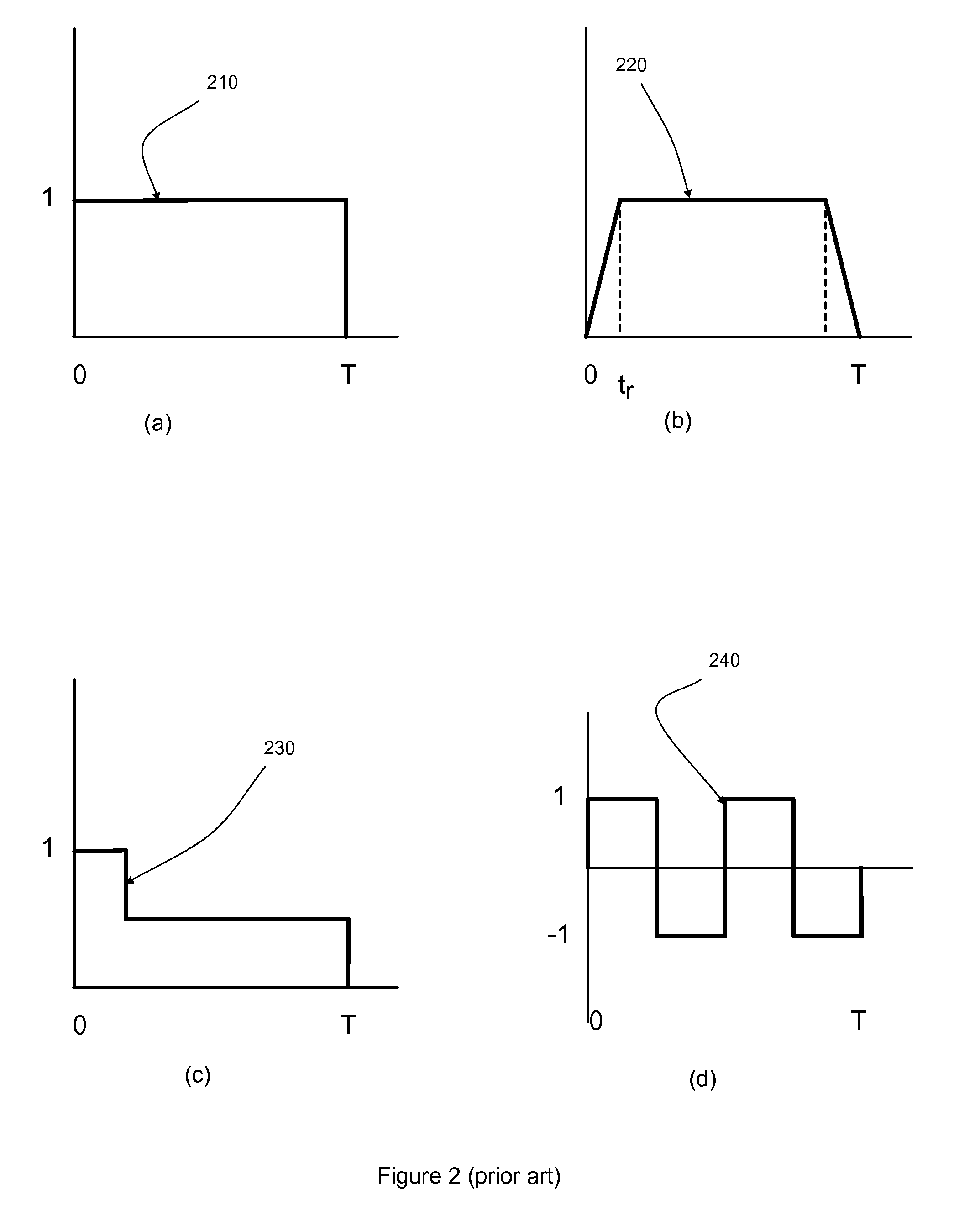Rank-order equalization
a technology of rank order and equalization, applied in the field of communication, can solve the problems of large memory impact on battery life, low power inability to design high-speed, low-power and pin-efficient chip-to-chip or device-to-device communication system, etc., and achieve the effect of substantial further robustness
- Summary
- Abstract
- Description
- Claims
- Application Information
AI Technical Summary
Benefits of technology
Problems solved by technology
Method used
Image
Examples
first embodiments
of Rank-Order Equalization
[0048]A first embodiment of a rank-order equalization unit 400 is now further described with reference to FIG. 4. A first sample unit 410 takes a set of samples of the waveforms y1(t), . . . , yn(t) present at the wires 135 of the communication bus 130 at a time instance T1. FIG. 4 exemplifies a communication bus 130 that comprises eight wires 135, but other embodiments are possible. A second sampler unit 450 takes another set of samples at time instance T2. In preferred embodiments, T1 and T2 are distinct times and T12. In other embodiments the sample times for the different wires i are not equal but may be taken differently as T1,i, T2,i. In some embodiments the sampling time instances T1, T2 may be uniformly spaced and in some embodiments the sampling spacing may be non-uniform.
[0049]The proposed rank-order equalization unit 400 comprises at least a rank-order unit 420, a coefficient selector 440 and a subtraction unit 460. The rank-order unit 420 determ...
PUM
 Login to View More
Login to View More Abstract
Description
Claims
Application Information
 Login to View More
Login to View More - R&D
- Intellectual Property
- Life Sciences
- Materials
- Tech Scout
- Unparalleled Data Quality
- Higher Quality Content
- 60% Fewer Hallucinations
Browse by: Latest US Patents, China's latest patents, Technical Efficacy Thesaurus, Application Domain, Technology Topic, Popular Technical Reports.
© 2025 PatSnap. All rights reserved.Legal|Privacy policy|Modern Slavery Act Transparency Statement|Sitemap|About US| Contact US: help@patsnap.com



